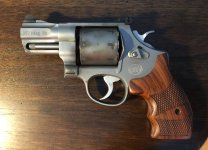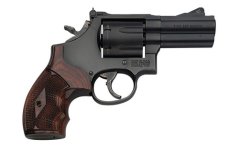dwever
Member
After one range trip plus a short tactical class totaling ca. 350 rounds of American Eagle .38, plus about five moon clips of +P, things are dirty. So dirty that I buy a commonly available brass brush. Resultantly, I am just stunned how quickly my cylinder face comes clean compared to my former nylon ways.
1. The brass brush was so much faster that now I'm on this forum asking if a brass brush is actually too abrasive for stainless steel at the cylinder face, or at the carbon smears that build on the outside of each charge hole, or anywhere else?
2. Same question for my 586 L-Comp which already has trace silver metal visible on the cylinder face as well as from the rotation against the cylinder lock?
I'm thinking if this is good to go, I just knocked a slew of time off my revolver cleaning, and how did I not know this all these years? THANKS!!
1. The brass brush was so much faster that now I'm on this forum asking if a brass brush is actually too abrasive for stainless steel at the cylinder face, or at the carbon smears that build on the outside of each charge hole, or anywhere else?
2. Same question for my 586 L-Comp which already has trace silver metal visible on the cylinder face as well as from the rotation against the cylinder lock?
I'm thinking if this is good to go, I just knocked a slew of time off my revolver cleaning, and how did I not know this all these years? THANKS!!
Attachments
Last edited:



